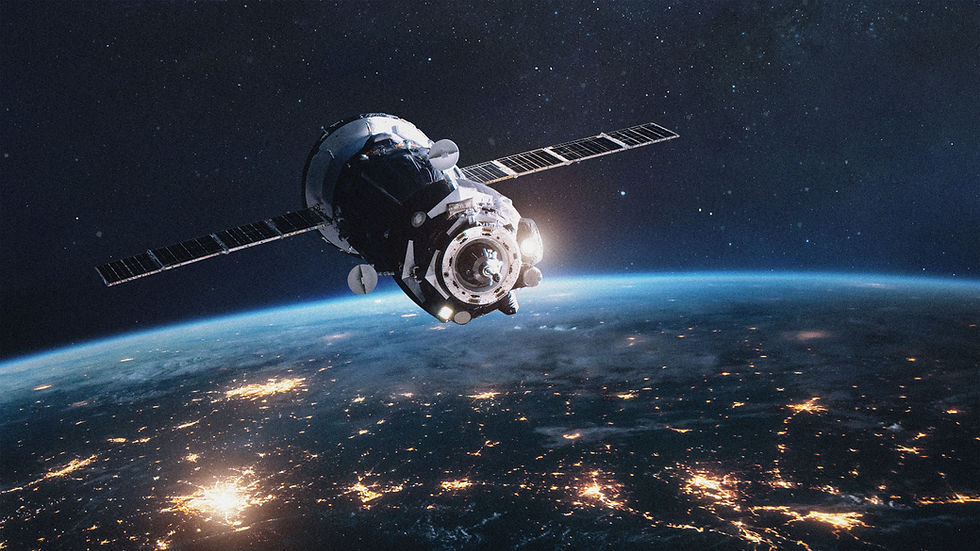What is an Ocean World?: Satellite Applicability and More
- Amanda Grodman

- Feb 15, 2023
- 3 min read
Updated: Jun 2, 2023
Extraplanetary environments are often thought of as desolate and dry compared to our biodiverse planet. Yet, there are several parallels between other planets (namely their moons), such as Saturn and Jupiter, and Earth in their hidden, aqueous composition. Found under layers of ice on moons Europa, Enceladus, and Ganymede amongst others are deep oceans, which may hold opportunities for diverse organisms. Though lunar environments may not pose ideal for life to thrive, other planets may. Through the expansion of spatial research concerning all disciplines, from microbiology to environmental engineering, comes the curiosity and question of these “ocean worlds” and their significance; new robotic and hardware developments permit the exploration of other planets, which may have been considered “far-fetched” years ago. Current research on ocean worlds poses great implications for satellite and rover missions–allowing us to venture deeper into the possible origin of extraterrestrial life.

An ocean world is a planet typically characterized by a thick layer of ice covering water with a varying core. Water on Earth is not crucial solely for drinking, but also because of the electrolytes that are released and allow organisms to harness nutrients. Current research aims to conclude if ice formed on distant planets permits electrolytes to penetrate, thereby yielding if extraterrestrial life is possible. To support the theory of other-planetary life, missions such as Cassini have attempted to quantify specific traits of ocean worlds that have favorable conditions; Enceladus (Saturn’s moon), for example, was confirmed to have hydrogen, which is necessary for organismal survival. Mars, a trending topic in regards to "near" space exploration, is thought to have been similar to Earth prior to losing its magnetic field–being composed of mostly water and therefore possibly life. Conversely, ocean worlds may be considered fairly distant from Earth–several hundred miles away–while others are located tens of light years away and can only be located using advanced technologies such as the James Webb Telescope. Truly, contemporary studies surrounding ocean worlds pose the possibility of not only extraterrestrial life, but historically biodiverse environments elsewhere than Earth.

Given their climate and distant nature, the idea of humans probing these icy landscapes seems daunting; this is where promising robotics and engineering enters. This can be seen with NASA’s Dragonfly, which is expected to launch in 2027, and will view similarities of natural occurrences on Saturn’s planet “Titan” to lend any knowledge about planetary behavior. Through the exploration of this planet, the rover can determine Titan’s chemical history (via examination of any bodies of water) and therefore the possibility of life. Another current project pioneered by NASA’s Jet Propulsion Laboratory is the Buoyant Rover for Under-Ice Exploration (BRUIE), which will visually confirm any living presence under the daunting icy layers. Through a dynamic wheel-based design tested in Antarctica (click the link to see images), BRUIE is one of the many research tools that will bridge the gap between Earthly research and ocean worlds–without the costly and hazardous deployment of humans. Though ocean worlds are certainly a pinnacle of extraplanetary exploration, there are other remarkable features that researchers and aerospace engineers aim to explore with promising technologies–all with the enthusiasm of emerging generations.

In this episode of “Let’s Go to Space: BLUESKY Learning,” Episode 94: Making Space for Florida Institute of Technology, we speak with Dr. Paula do Vale Pereira, an Assistant Professor of Aerospace Engineering at the Florida Institute of Technology. Having earned a Ph.D. in Space Systems Engineering and an M.Sc. in Aerospace Engineering from Massachusetts Institute of Technology (MIT), Dr. Pereira has applied herself in several disciplines for the benefit of spatial discoveries. Her research focuses on space exploration technology, including small spacecraft for ocean world explorations, as shown in her numerous satellite projects. Dr. Pereira embodies the intersection of technology and aerospace in a novel and ambitious manner–hoping to inspire students to pursue satellite development in the coming years. Learn more about Dr. Paula do Vale Pereira or visit our other weekly podcasts to hear from other speakers, by clicking the link above. Also make sure to check out our website to learn more about becoming a member of the Aerospace and Innovation Academy, where you can join us in our quest to go to space.




Comments